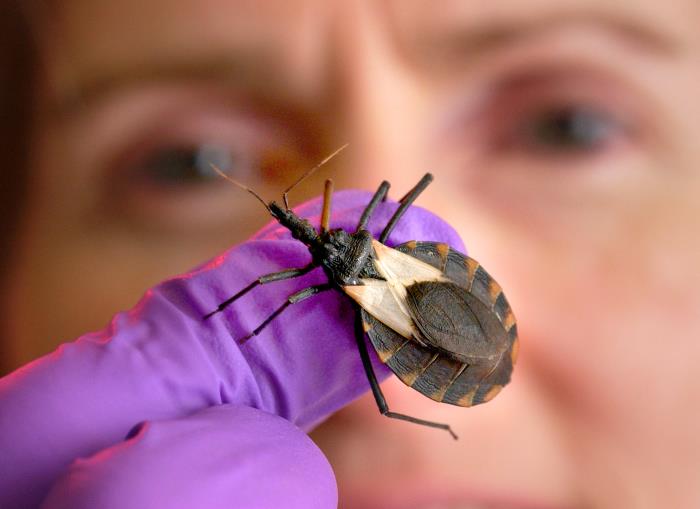First novel Chagas disease treatment in 3 decades lacks efficacy
E1224 — the first new chemical entity developed for Chagas disease in more than 3 decades —had a favorable safety profile but was less effective in achieving sustained parasite clearance compared with benznidazole, according to results of a randomized controlled phase 2 trial.
“These results provide support to the scaling up of diagnosis and access to standard regimens of benznidazole, and provide a roadmap for the development and registration of novel, alternative treatment regimens of benznidazole in monotherapy and in combinations with E1224 for the treatment of adults with chronic indeterminate Chagas disease,” Faustino Torrico, PhD, professor at the University of San Simón in Cochabamba, Bolivia, and colleagues wrote in The Lancet Infectious Diseases.
Although Chagas disease was first described more than a century ago, the only drugs available for the parasitic infection — caused by Trypanosoma cruzi — are benznidazole and nifurtimox, according to the researchers.
“Clinical development in Chagas disease is fraught with difficulties related to the evaluation of therapeutic response and long delays in showing clinical effects,” they wrote. “The pharmacokinetic-pharmacodynamic relationships of treatments for Chagas disease are not fully understood and, to date, no markers can adequately predict patients at risk of progression to chronic disease.”
Previous data showed that E1224, a water-soluble ravuconazole prodrug, appeared to be a promising treatment candidate for Chagas disease. To further investigate the safety and efficacy of E1224, Torrico and colleagues randomly assigned 231 adult patients with a confirmed diagnosis of T. cruzi infection at two outpatient clinics in Bolivia to one of five treatment groups: high-dose E1224 given as 400 mg once-daily for 3 days, followed by 400 mg once a week for 7 weeks (n = 45); low-dose E1224 given as 200 mg once-daily for 3 days, followed by 200 mg once a week for 7 weeks (n = 48); short-dose E1224 given as 400 mg for 3 days, followed by 400 mg once a week for 3 weeks (n = 46); benznidazole given as 5 mg/kg per day for 60 days (n = 45); or placebo (n = 47).
After 1 week, all treatment regimens significantly reduced parasite levels compared with placebo. However, no patients in the low-dose and short-dose groups and only 29% (95% CI, 16.4-44.3) in the high-dose group had a sustained parasitological response during a 12-month follow-up period vs. 9% (95% CI, 2.4-20.4) of patients in the placebo group. In contrast, benznidazole demonstrated early and sustained efficacy, with 82% (95% CI, 67.9-92) of patients having cleared the parasite at the follow-up visit.
In a safety analysis, 81% of patients developed treatment-emergent adverse events, including headaches, nausea, pruritus, peripheral neuropathy and hypersensitivity. Benznidazole accounted for more than half (64%) of treatment-related adverse events. Five patients in the E1224 high-dose group and four in the benznidazole group discontinued treatment because of adverse events. One patient in the short-dose group, three in the high-dose group and two in the benznidazole group experienced serious adverse events.
Despite its “manageable toxicity,” Torrico and colleagues concluded that future investigations will not assess E1224 as monotherapy because of its lack of prolonged efficacy.
In a related editorial, Julio A. Urbina, PhD, emeritus investigator at the Venezuelan Institute for Scientific Research, noted that combinations of E1224 and benznidazole are currently being assessed in the BENDITA study.
“The search for a safe and effective treatment of chronic Chagas disease has been a long, winding road, not unexpectedly owing to the biological complexity of the disease and its socioeconomical determinants, including the shortage of political will by governments of endemic countries and economic interest by pharmaceutical companies,” he wrote. “Nevertheless, despite disappointments, important insights have been gathered in the past decade through the efforts of the medical and scientific communities, public-private partnerships, and patients' organizations.
“On the basis of those findings, alternative treatment schemes with both types of drugs, alone and in combinations, are being designed and tested. However, due to the natural history of the disease, a pressing need remains for biomarkers of early response to such treatments.” – by Stephanie Viguers
Disclosures: The authors report no relevant financial disclosures.


